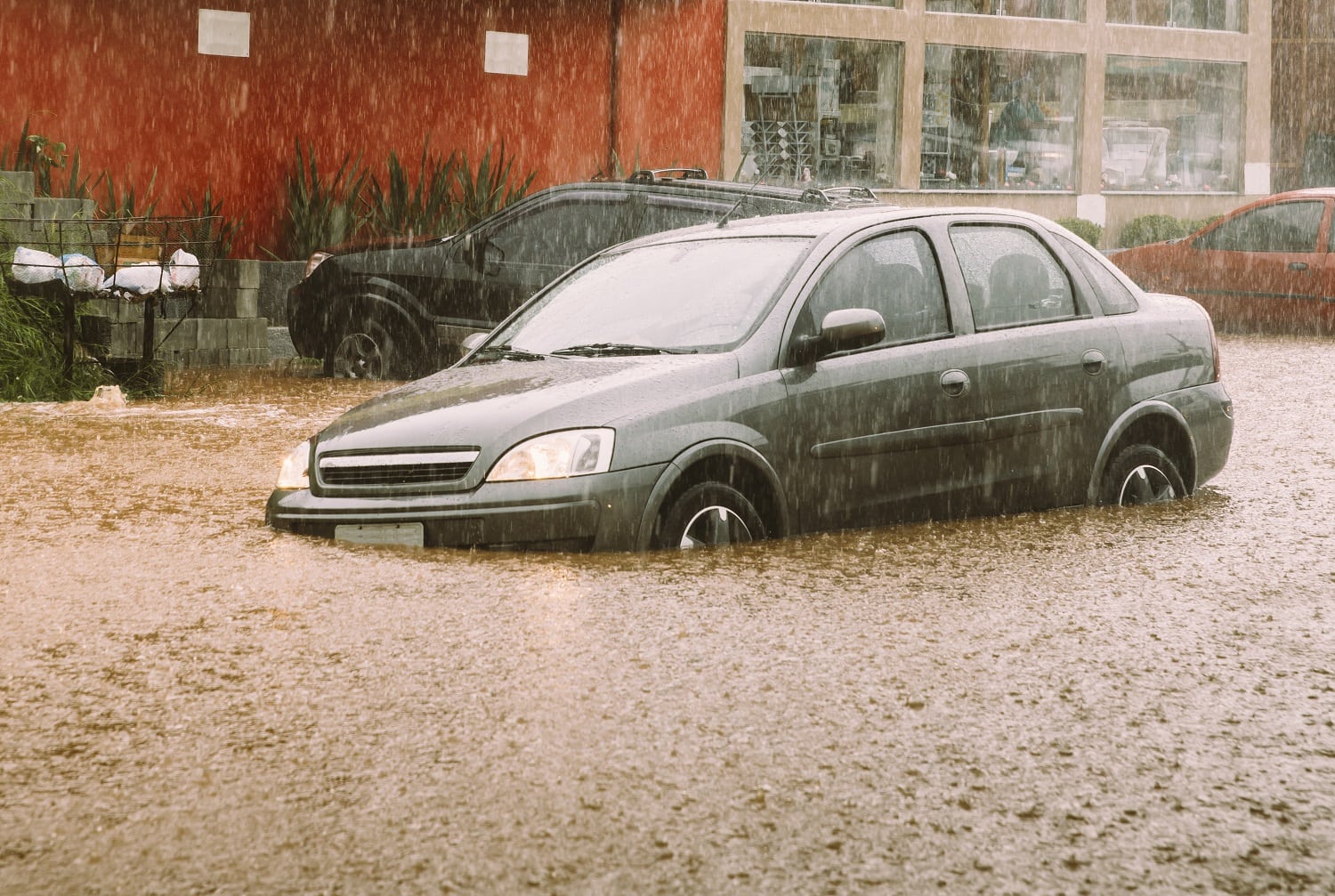Recognizing And Responding To A Flash Flood Emergency

Table of Contents
Recognizing the Signs of an Impending Flash Flood
A flash flood warning indicates an imminent danger. Being able to recognize the early warning signs of a flash flood is critical for effective flood safety. These signs often precede a formal flash flood warning from the National Weather Service, giving you precious time to react. Key indicators include:
-
Sudden heavy or persistent rainfall in your area: Don't underestimate the power of seemingly ordinary rainfall. Prolonged, intense downpours, even if not accompanied by thunder and lightning, can quickly overwhelm drainage systems and lead to rapid water rises. Pay close attention to weather forecasts and radar updates.
-
Rapidly rising water levels in streams, creeks, and rivers: Observe water levels in nearby waterways. A sudden and significant increase, even a few inches in a short period, is a major warning sign.
-
A flash flood warning issued by local authorities or the National Weather Service: When issued, heeding these alerts is paramount. These warnings are based on real-time data and indicate an immediate threat of flash flooding. Sign up for emergency alerts on your phone and utilize weather radio.
-
A noticeable increase in water flow, even in normally dry areas: Water flowing where it typically doesn't is a clear sign that something is amiss. This could indicate that upstream areas are experiencing heavy rainfall and the water is rushing downstream.
-
Swollen streams and rivers exceeding their banks: Rivers and streams expanding beyond their normal boundaries are a clear indication of a potential flash flood. This signifies a significant increase in water volume.
-
Unusual sounds like rushing water or debris carried by the current: Listen for unusual noises. The roar of rushing water or the sound of debris being carried by a strong current are strong indicators of a flash flood in progress.
-
Changes in water color and clarity: A dramatic shift in the water's color or clarity, such as becoming muddy or filled with debris, can indicate increased runoff from heavy rainfall upstream.
Developing a Flash Flood Preparedness Plan
A proactive approach to flood preparedness is essential. Developing a comprehensive flash flood emergency plan can save lives and minimize damage. Your plan should include:
-
Identify potential flash flood risks in your area and create an evacuation route: Knowing your surroundings is crucial. Map out potential flood zones in your area and plan multiple escape routes to higher ground.
-
Assemble a flash flood emergency kit with essential supplies (water, food, first-aid, medications, etc.): Your emergency kit should contain enough supplies to last several days. Include plenty of water, non-perishable food, a well-stocked first-aid kit, medications, flashlights, and a battery-powered radio.
-
Designate a safe meeting place for your family in case of separation: Establish a designated location outside of your home where family members can meet in case of evacuation or separation.
-
Establish a communication plan with family members and emergency contacts: Designate a primary contact person outside of the affected area to ensure communication if phone lines go down.
-
Know the elevation of your property and find higher ground if needed: Determine the elevation of your property and identify higher ground where you can seek refuge in a flash flood.
-
Understand local evacuation procedures and routes: Familiarize yourself with your community's evacuation plans and routes.
Building a Robust Emergency Kit
Your emergency kit is your lifeline during a flash flood. Ensure it's comprehensive and readily accessible:
-
Several gallons of potable water per person: Aim for at least one gallon per person per day for several days.
-
Non-perishable food items for several days: Choose foods that require no refrigeration or cooking.
-
A well-stocked first-aid kit: Include bandages, antiseptic wipes, pain relievers, and any necessary prescription medications.
-
Flashlight with extra batteries: A reliable light source is crucial during a power outage.
-
Battery-powered radio and extra batteries: Stay informed about the situation through weather alerts and emergency broadcasts.
-
Copies of essential documents (ID, insurance, medical records): Store these in waterproof bags.
-
Medications and medical supplies: Include any necessary prescription medications, along with any other medical supplies you might need.
-
Waterproof bags for electronics and important documents: Protect vital items from water damage.
Responding to a Flash Flood Emergency
When a flash flood warning is issued, immediate action is critical. Your response should prioritize safety and minimizing risk.
-
Move to higher ground immediately if a flash flood warning is issued: Do not delay. Evacuate to higher ground as soon as a warning is issued.
-
Avoid driving or walking through flooded areas: Flooded areas can hide unseen dangers like downed power lines and debris. Even shallow water can be deceptively dangerous. "Turn around, don't drown" is crucial advice.
-
Do not attempt to cross flowing water on foot or in a vehicle: The force of flowing water can easily sweep you away, even in seemingly shallow areas.
-
Stay informed of the situation by monitoring weather reports and emergency alerts: Continue to monitor updates from the National Weather Service and local authorities.
-
Follow instructions from local authorities and emergency responders: Obey all directions from emergency personnel.
-
Turn off all utilities if instructed to evacuate: This reduces the risk of electrical shock and further damage.
-
Be aware of potential hazards like downed power lines and debris: Flooding often brings hazardous debris and downed power lines. Exercise extreme caution.
Post-Flash Flood Actions
Once the immediate danger has passed, there are still important steps to take.
-
Avoid flood waters which may be contaminated and dangerous: Floodwater often contains hazardous materials and contaminants. Avoid contact as much as possible.
-
Assess the damage to your property and contact insurance if necessary: Document all damage with photos and videos for insurance claims.
-
Take photos of damage for insurance claims: This is crucial for expediting your claim process.
-
Obtain help from qualified professionals for repairs and cleanup: Flood damage can be extensive, requiring professional assistance for safe and effective cleanup and repair.
-
Follow safety precautions when cleaning up flood-damaged areas: Wear protective gear and be aware of potential health hazards.
-
Stay aware of potential health risks in contaminated areas: Floodwater can pose significant health risks; follow guidance from public health officials.
Conclusion:
Flash floods are unpredictable and dangerous. By understanding the signs of an impending flash flood, developing a comprehensive preparedness plan, and knowing how to respond effectively, you significantly reduce your risk and enhance your chances of survival. Remember, preparedness is key. Create your flash flood emergency plan today and stay informed about weather conditions to protect yourself and your family from the devastating effects of a flash flood. Don't wait; prioritize your safety and learn more about recognizing and responding to a flash flood emergency now.

Featured Posts
-
 Roc Agel La Discreta Propiedad Grimaldi Donde Se Refugio Charlene
May 25, 2025
Roc Agel La Discreta Propiedad Grimaldi Donde Se Refugio Charlene
May 25, 2025 -
 The Jenson Fw 22 Extended Collection A Comprehensive Guide
May 25, 2025
The Jenson Fw 22 Extended Collection A Comprehensive Guide
May 25, 2025 -
 Nasledie Nashego Pokoleniya Chto My Sozdali I Chto Ostavim Potomkam
May 25, 2025
Nasledie Nashego Pokoleniya Chto My Sozdali I Chto Ostavim Potomkam
May 25, 2025 -
 Kharkovschina 40 Svadeb Za Odin Den Kakaya Data Stala Populyarnoy Foto
May 25, 2025
Kharkovschina 40 Svadeb Za Odin Den Kakaya Data Stala Populyarnoy Foto
May 25, 2025 -
 Rassel Prinyos Mercedes 300 Y Podium Dostizheniya Khemiltona
May 25, 2025
Rassel Prinyos Mercedes 300 Y Podium Dostizheniya Khemiltona
May 25, 2025
